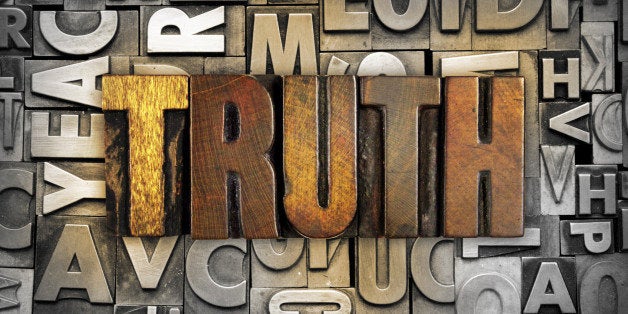
The smell of fresh paint wafted about late last week as a panel convened to interrogate the worlds of art and activism. Recently situated in a new location near Union Square, the Goethe Institut hosted an event Thursday, March 26, "Truth is Concrete," that began and ended with a call to action led by popular reverend Bill Talen, who made a name for himself and the social justice movement by leading the Stop Shopping Choir to fight a machine whose operating system Talen, Savitri D, Taja Cheek, Noah Fischer, Gregory Sholette, and Raquel de Anda deconstructed. Nato Thompson moderated their discussion, one led by Florian Malzacher, whose new book Truth Is Concrete: A Handbook for Artistic Strategies in Real Politics explores various ways of merging the symbiotically connected need for art in activism and activism in art.
From Tahrir Square to Zuccotti Park, and the Kiev Maidan and Syntagma Square in Athens, the Goethe Institut press release proclaimed, artists have been at the forefront of all these and are now taking stock, exploring the dynamic between art and politics. Savitri D did not want to waste any time with theorizing. The problem is not that people do not know. "There's a tyranny of information," she said. "It is imperative to be activist," adding that art and activism are on parallel tracks. Borrowing the phrase "art is hard," Savitri said, "yes, and activism is harder." She stressed the need for "creative resistance" to forces such as extractive industries -- oil and gas, among many others -- and the machine in general, pointing to the successes and shortcomings of the #Occupy and #BlackLivesMatter movements as touchstones for what art-activism can and should do. Savitri spoke of being liberated from categories and careerism, and that what matters more than how for activists is who, that is with whom activists work to make change. The difference between Occupy and Black Lives Matter, for Savitri, is the former was about "communities becoming radicalized" and the latter about "radicals seeking community."
"Is our species in a state of shock?" Rev. Talen asked. "We kill the people who hear the Earth, we murder them," he said. Talen accused the "predators trapped behind desks, wheels, and guns" of overwhelming "the talk of Earth" under an inundation of a "sea of overlapping apocalypses." Talen, charismatic and animated, punctuated nearly every line with a plaintive "amen?" to which the crowd responded, "Amen!"
Taja Cheek, who has been working with the "rightful owners" of the famous Slave Theater and helped create a space in Chelsea called Nola Darling, emphasized the need for solidarity among artists of color and among artists generally. Cheek also brought up Kara Walker's recent installation at the former site of the Domino sugar factory as a focal point where people met, took off their disguises of "strangerdom," and told people why they were there. Her work, she said, has taken her to a lot of "weird underground PoC" outlets on the internet. Cheek describes herself as a "Black Weirdo," explaining that the "whole point of declaring my separation from mainstream America and its trite stereotypes of blackness is to normalize and legitimize that ostensible strangeness."
Noah Fischer has been working to expose the exploitative labor conditions that the Guggenheim has undertaken building its museum in Abu Dhabi, and is a strategist and organizer of direct actions on the topic of debt. Alluding to the title of the book and event, for him "politics are concrete rather than ambiguous." Fischer focuses on museums because they are institutions he seeks to use as a way of leveraging issues like control of public space. He spoke of the difficulty for artists to collaborate on principle of solidarity in the face of "neoliberal capitalism," and expanded on what he meant by "existential debt" in an email, explaining that it refers to "debt that can never be repaid, debt that is greater that one's lifespan, one's existence."
Fischer added that artists, who "are likely to find ourselves saddled with existential debt because art schools are among the most expensive educations," are compelled to "aim your projects toward market capitalization and avoid political positions that won't ingratiate you with those with money and prestige." There is a bright side: "Existential debts could prove to be a mechanism for solidarity. Since you are saddled with debt for life, there is little to lose to strike or stop believing in your debt." During the talk, he mentioned the Rolling Jubilee, "only a window into a system" but a very important one, nonetheless -- millions of dollars in debt erased, out of trillions.
Raquel de Anda spoke about the burgeoning climate arts movement, asking for a show of hands who attended the People's Climate March last September. "We live in an image-saturated culture," Anda said, connecting racial and social justice to climate. Anda hates the word "expert," as it summons up a hierarchy of knowledge that excludes the uninitiated and reinforces the power of the elect. What is the intersection between activism and art, anyway? For one thing, art is much more difficult to define. The point of activism is to challenge a prevailing system by mobilizing concerned people to push for social change, and to thereby push for a transmutation of the values and symbols which underly that system. The world of art either reifies or subverts those symbols and values.
"Whatever mechanism is in charge of making the switch is not making the switch," Thompson told me after the discussion. "Everyone knows everything is going wrong, but nothing is changing," he said. The problem is the way power is understood does not match up with how it actually works, Thompson said. "How do you shift the fucking gear?"
